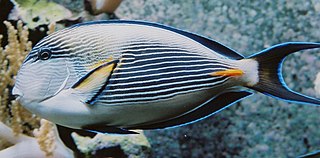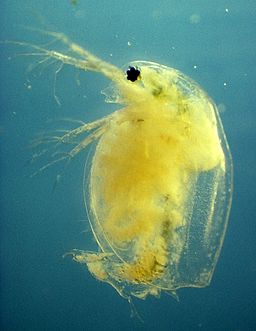Related Research Articles

Bacillus is a genus of Gram-positive, rod-shaped bacteria, a member of the phylum Bacillota, with 266 named species. The term is also used to describe the shape (rod) of other so-shaped bacteria; and the plural Bacilli is the name of the class of bacteria to which this genus belongs. Bacillus species can be either obligate aerobes which are dependent on oxygen, or facultative anaerobes which can survive in the absence of oxygen. Cultured Bacillus species test positive for the enzyme catalase if oxygen has been used or is present.

An endospore is a dormant, tough, and non-reproductive structure produced by some bacteria in the phylum Bacillota. The name "endospore" is suggestive of a spore or seed-like form, but it is not a true spore. It is a stripped-down, dormant form to which the bacterium can reduce itself. Endospore formation is usually triggered by a lack of nutrients, and usually occurs in gram-positive bacteria. In endospore formation, the bacterium divides within its cell wall, and one side then engulfs the other. Endospores enable bacteria to lie dormant for extended periods, even centuries. There are many reports of spores remaining viable over 10,000 years, and revival of spores millions of years old has been claimed. There is one report of viable spores of Bacillus marismortui in salt crystals approximately 25 million years old. When the environment becomes more favorable, the endospore can reactivate itself into a vegetative state. Most types of bacteria cannot change to the endospore form. Examples of bacterial species that can form endospores include Bacillus cereus, Bacillus anthracis, Bacillus thuringiensis, Clostridium botulinum, and Clostridium tetani. Endospore formation is not found among Archaea.

Acanthuridae are the family of surgeonfishes, tangs, and unicornfishes. The family includes about 86 extant species of marine fish living in tropical seas, usually around coral reefs. Many of the species are brightly colored and popular in aquaria.

Bacillus subtilis, known also as the hay bacillus or grass bacillus, is a gram-positive, catalase-positive bacterium, found in soil and the gastrointestinal tract of ruminants, humans and marine sponges. As a member of the genus Bacillus, B. subtilis is rod-shaped, and can form a tough, protective endospore, allowing it to tolerate extreme environmental conditions. B. subtilis has historically been classified as an obligate aerobe, though evidence exists that it is a facultative anaerobe. B. subtilis is considered the best studied Gram-positive bacterium and a model organism to study bacterial chromosome replication and cell differentiation. It is one of the bacterial champions in secreted enzyme production and used on an industrial scale by biotechnology companies.
Candidatus Epulopiscium is a genus of Gram-positive bacteria that have a symbiotic relationship with surgeonfish. These bacteria are known for their unusually large size, many ranging from 0.2 - 0.7 mm in length. Until the discovery of Thiomargarita namibiensis in 1999, Epulonipiscium species were thought to be the largest bacteria. They are still the largest known heterotrophic bacteria.
The bacterium, despite its simplicity, contains a well-developed cell structure which is responsible for some of its unique biological structures and pathogenicity. Many structural features are unique to bacteria and are not found among archaea or eukaryotes. Because of the simplicity of bacteria relative to larger organisms and the ease with which they can be manipulated experimentally, the cell structure of bacteria has been well studied, revealing many biochemical principles that have been subsequently applied to other organisms.
"Candidatus Midichloria" is a candidatus genus of Gram-negative, non-endospore-forming bacteria, with a bacillus shape around 0.45 µm in diameter and 1.2 µm in length. First described in 2004 with the temporary name IricES1, "Candidatus Midichloria" species are symbionts of several species of hard ticks. They live in the cells of the ovary of the females of this tick species. These bacteria have been observed in the mitochondria of the host cells, a trait that has never been described in any other symbiont of animals.

Bacillus anthracis is a gram-positive and rod-shaped bacterium that causes anthrax, a deadly disease to livestock and, occasionally, to humans. It is the only permanent (obligate) pathogen within the genus Bacillus. Its infection is a type of zoonosis, as it is transmitted from animals to humans. It was discovered by a German physician Robert Koch in 1876, and became the first bacterium to be experimentally shown as a pathogen. The discovery was also the first scientific evidence for the germ theory of diseases.

Acanthurus nigrofuscus, the brown surgeonfish, blackspot surgeonfish, brown tang, dusky surgeon, lavender tang or spot-cheeked surgeonfish, is a species of marine ray-finned fish belonging to the familyAcanthuridae, which includes the surgeonfishes, unicornishes and tangs. This species is a common and abundant fish occurring across a wide Indo-Pacific range.
Fission, in biology, is the division of a single entity into two or more parts and the regeneration of those parts to separate entities resembling the original. The object experiencing fission is usually a cell, but the term may also refer to how organisms, bodies, populations, or species split into discrete parts. The fission may be binary fission, in which a single organism produces two parts, or multiple fission, in which a single entity produces multiple parts.

Clostridium sporogenes is a species of Gram-positive bacteria that belongs to the genus Clostridium. Like other strains of Clostridium, it is an anaerobic, rod-shaped bacterium that produces oval, subterminal endospores and is commonly found in soil. Unlike Clostridium botulinum, it does not produce the botulinum neurotoxins. In colonized animals, it has a mutualistic rather than pathogenic interaction with the host.
Symbiobacterium thermophilum is a symbiotic thermophile that depends on co-culture with a Bacillus strain for growth. It is Gram-negative and tryptophanase-positive, with type strain T(T). It is the type species of its genus. Symbiobacterium is related to the Gram-positive Bacillota and Actinomycetota, but belongs to a lineage that is distinct from both.S. thermophilum has a bacillus shaped cell structure with no flagella. This bacterium is located throughout the environment in soils and fertilizers.
Thermoleophilum album is a bacterium obligate for thermophily and n-alkane substrates, the type species of its genus. It is Gram-negative, aerobic, small, and rod-shaped. It lacks pigmentation, motility, and the ability to form endospores, with type strain ATCC 35263.

Pasteuria ramosa is a gram-positive, endospore-forming bacterium in the Bacillus/Clostridia clade within Bacillota. It is an obligate pathogen of cladoceran crustaceans from the genus Daphnia. Daphnia is a genus of small planktonic crustaceans including D. magna, P. ramosa's most popular host target. Other hosts include D. pulex, D. longispina, D. dentifera, and Moina rectirostris. An established and widely used coevolutionary model of host-pathogen interactions exists with P. ramosa and D. magna.
Alicyclobacillus disulfidooxidans a species of Gram positive, strictly aerobic, bacterium. The bacteria are acidophilic and produced endospores. It was first isolated from waterwater sludge in Blake Lake City, Quebec, Canada. The species was first identified in 1996, but was classified as Sulfobacillus disulfidooxidansis. It was reclassified as Alicyclobacillus in 2005. The name is derived from the Latin duplus (double), sulfur (sulfur), and oxido (oxidize), referring to the bacterium's ability to oxidize disulfide.
Alkalihalobacillus is a genus of gram-positive or gram-variable rod-shaped bacteria in the family Bacillaceae from the order Bacillales. The type species of this genus is Alkalihalobacillus alcalophilus.
Mesobacillus is a genus of gram-positive or gram-variable, rod-shaped bacteria in the family Bacillaceae within the order Bacillales. The type species for this genus is Mesobacillus jeotgali.
Niallia is a genus of Gram-Positive rod-shaped bacteria in the family Bacillaceae from the order Bacillales. The type species of this genus is Niallia circulans.
Schinkia is a genus of Gram-positive rod-shaped bacteria in the family Bacillaceae from the order Bacillales. The type species of this genus is Schinkia azotoformans.
Alkalicoccus is a genus of Gram-Positive rod-shaped bacteria in the family Bacillaceae from the order Bacillales. The type species of this genus is Alkalicoccus saliphilus.
References
- ↑ Chatton E, Perard C (1913). "Schizophytes du caecum du cobaye. II. Metabacterium polyspora n. g., n. s.". C.R. Hebd. Soc. Biol. 74 (156): 1232–34.
- ↑ Angert ER, Brook AE, Pace NR (1996). "Phylogenetic Analysis of Metabacterium polyspora: Clues to the Evolutionary Origin of Daughter Cell Production in Epulopiscium Species, the Largest Bacteria". J Bacteriol. 178 (5): 1451–56. doi:10.1128/jb.178.5.1451-1456.1996. PMC 177821 . PMID 8631724.